Damien Hirst has created the exhibition the post-truth world deserves. “Treasures from the Wreck of the Unbelievable” showing concurrently at both of the Pinault Foundation’s spaces in Venice, is a labyrinthine, multi-layered concoction bringing together stories, objects, film, and photographs, all of them dubious—deliberately, teasingly so.
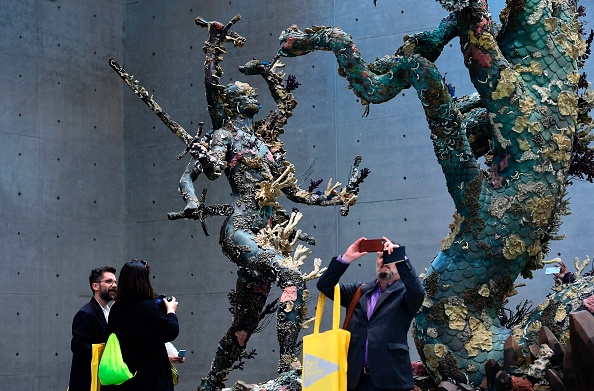
Like many good dramas, “Treasures” comes with a backstory: the remains of a ship, sunk some 2,000 years ago off the coast of East Africa. The property of a remarkable collector—a freed slave, no less—named Cif Amotan II, the vessel was carrying a vast art collection containing artifacts from every civilization then known, transporting it to a museum island where they would be placed on show. The ship went down, and she and her marvels remained undisturbed until their rediscovery in 2008. Her salvaged cargo, the conceit has it, is the treasure we see before us.
There are vast bronze warrior-goddesses, apparently straight off the set of Game of Thrones. There are marble busts that resemble nothing so much as dismembered Barbie dolls, likenesses of which have been sneakily cheated into a photo of a historic Surrealist exhibition. There also are marmoreal Cyclops skulls; devotional figures; tombs; tableaux; urns; vitrines filled with shields, jewelry, and coins. This is a museum’s worth of artifacts, evocative of an ancient world’s far-reaching splendors.
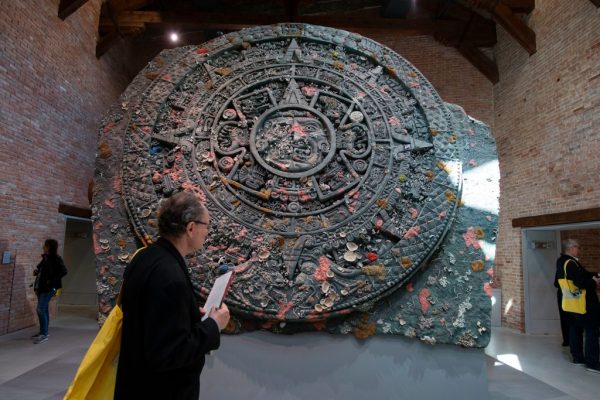
In keeping with the shipwreck theme, many works bristle with white worm casts and ‘coral’ of improbable hue. In large-format photographs and film footage we see divers handling the works on the seabed—certainly the documentation looks plausible enough, but, amid all this slippery artifice, who can tell for sure? Were the works plopped underwater for a photo op and then heaved straight back out again, or did they linger a while to gather their forged patina? (The very evidently fake coral would suggest they did not dip long enough for the real organisms to form.) Is it all Photoshop and CGI? Perhaps: though members of Hirst’s team talk convincingly of a dive to visit the site.
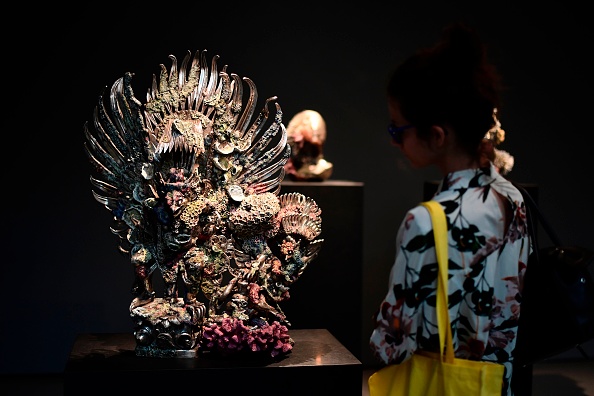
After some 10 years of gestation—not all of it with the Pinault Foundation’s involvement—it would be fair to say that this show is a contemporary-art spectacle of unparalleled ambition. Logistically, the enterprise is off the charts. There’s an 54-foot-high statue of a headless demon precisely fitted to fill the atrium of the Palazzo Grassi. There’s a blinging embarrassment of costly materials—malachite, gold, lapis, and jade—on display. Specialist salvage ships were hired on the Indian Ocean to lower and raise vast bronze works to and from the seabed, like so many cookies in a cup of tea.
On one level, the cost of the thing and the effort of putting it together are all so much petty distraction—the showy money-related stuff that we all get so obsessed with around Hirst, and which we shake our heads at disapprovingly, but find impossible to ignore. He was ever the showman. But then again, questions of cost, value, ownership, control, and reputation are precisely the fast-shifting territory that “Treasures” is exploring.
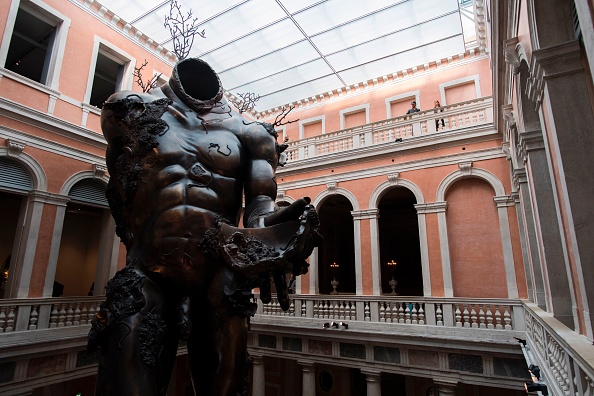
It’s territory Hirst knows well, not only as an artist, but also as a collector of art. In fact, his likeness appears in a bronze titled Bust of the Collector, muddying the water between these two roles. In the guise of the collector “Cif Amotan II,” these are all his works because he ostensibly bought them and owns them; as the artist Damien Hirst, these are his works because he conceived and commissioned them to be made in his name.
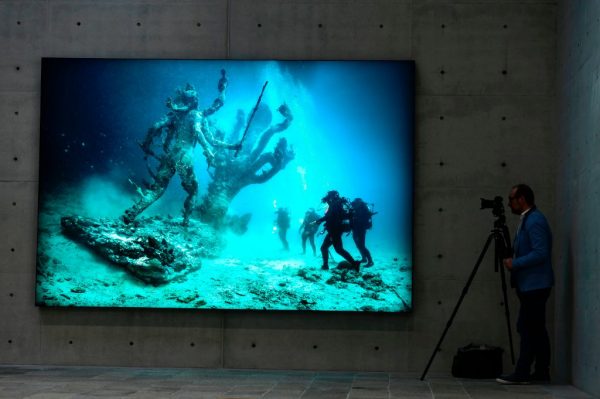
Much like the art market, the idea of buried treasure carries with it associations of vast unearned wealth appearing overnight, monies gained not through honest toil but a combination of cunning and luck. In the art market, value is locked fast to authenticity and verification. The forms displayed in “Treasures” reappear in multiple formats—Hydra and Kali appears as an ‘original’ full-sized bronze covered in coral, a full-sized bronze ‘reproduction,’ and an editioned tabletop silver figurine. Mmm… such bling!
The accompanying texts, presented as part of the works themselves, range from deadpan museological pseudo-scholarship to full-on auction-catalogue entries.
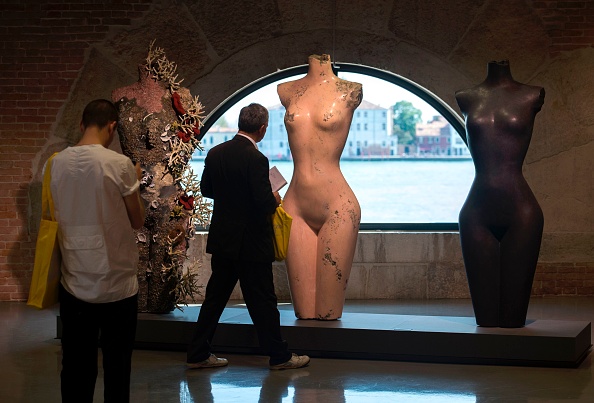
For sheer blatancy, my favorite among these is for “An impressive collection of coinage from the wreck of the ‘Unbelievable,’” for therein lies, of course, the $90 million question: can I buy it? On the subject of availability and price, the Pinault Foundation provided artnet News with the following statement: “This is an exhibition in a museum, so we don’t know the prices of the works that all belong to the artist.”
As with pretty much everything else about this show, the true details are under wraps. I’ll say one thing for Hirst: He runs a tight ship.
Damien Hirst’s “Treasures from the Wreck of the Unbelievable” is at Palazzo Grassi and Punta Della Dogana, Venice, April 9-December 3, 2017
*extracted from artnet
